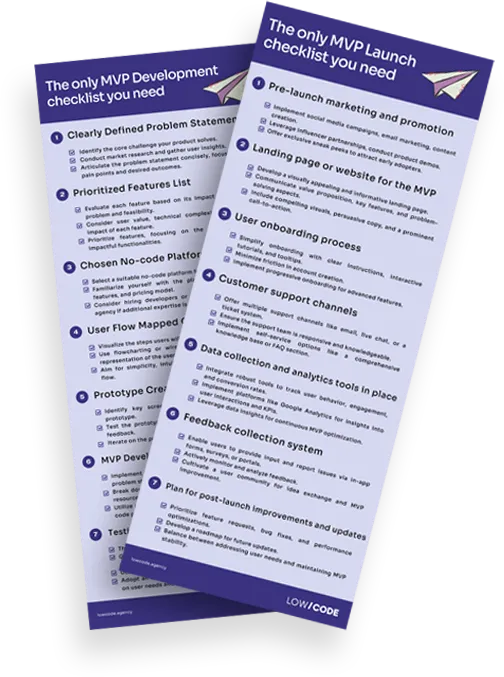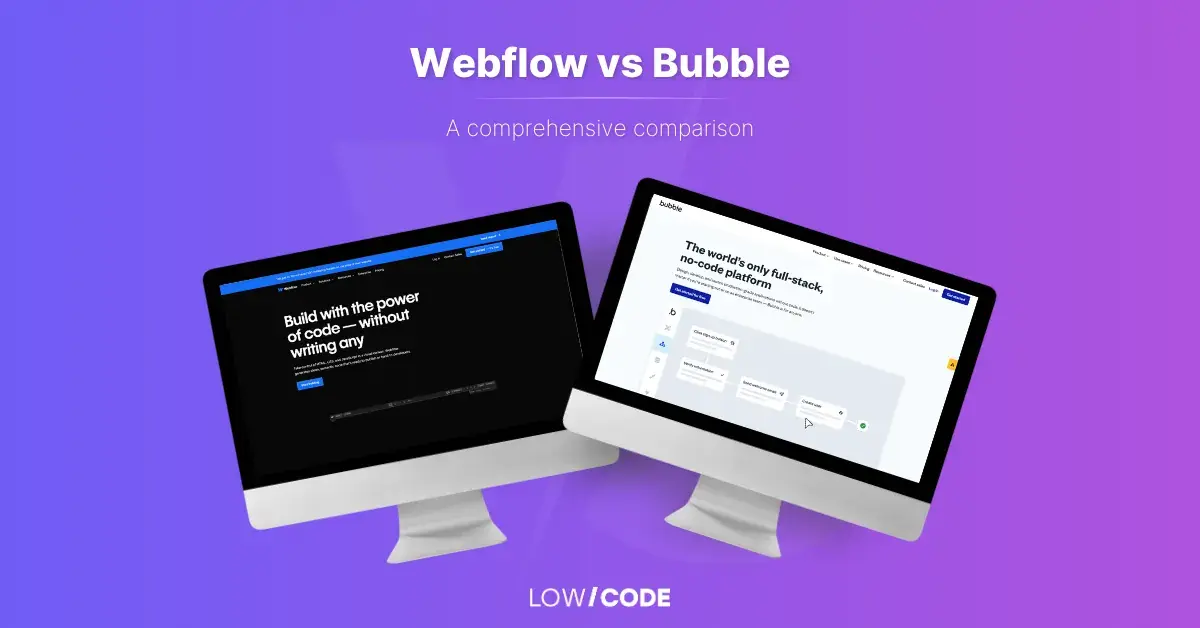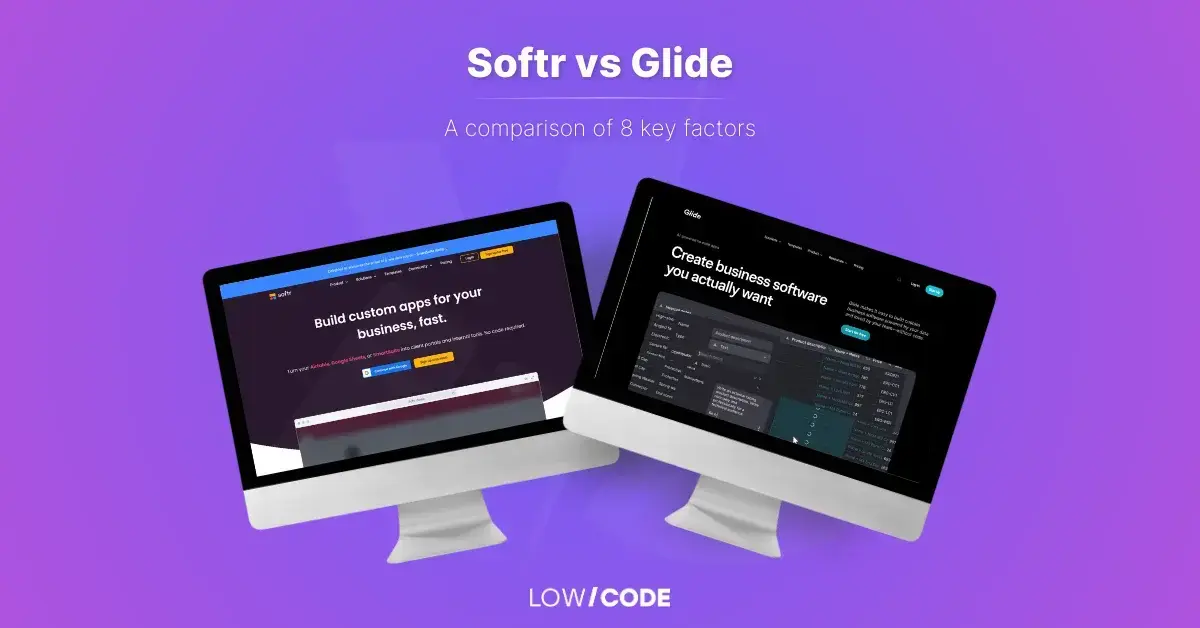
FlutterFlow vs Adalo vs Bubble
No-code platforms are a great way to cut down on the time it takes to market your product or service, which makes it easier to automate operations quickly and easily.
The premise of being able to build the app of your dreams without writing a single line of code sounds irresistible, and with many no-code platforms out there, deciding which one to choose starts an internal battle for everyone.
Although there are numerous no-code platforms on the market, not all of them may be ideal for you. Choosing a no-code platform—also known as a zero-code platform—requires making sure your money is going toward the best technology on the market.

FlutterFlow, Adalo, and Bubble are three of the leading no-code platforms nowadays. They all have unique value propositions, depending on what the use case is. Let’s look at which tool might be the best fit for your project, as well as the drawbacks and benefits, among other things.
FlutterFlow no-code app builder
FlutterFlow prides itself on being 10x faster than traditional development. Thanks to its visual drag-and-drop builder, users can easily connect data and include API connections to make multilingual software. The apps built on this platform are 100% compatible with the iOS and Android app stores.

FlutterFlow's integration with Google Firebase makes it easy for developers to handle user authentication, define data types in the software's editor, and add widgets to the Firebase database.
The platform is working with Algolia and Codemagic to offer deep searches, and Codemagic will test and validate the application before it is made available. The user interface for FlutterFlow is simple to operate.
As a no code app builder, FlutterFlow represents a great option to build amazing native apps, and even more if you use tools like Flutter that will allow you to extend the development by adding "traditional" code. Although if you are looking for a platform to build desktop apps or to solve your business needs, FlutterFlow may not be the best option. In this regard, we invite you to consider other platforms such as Glide, Bubble, or Adalo.
Adalo no-code app builder
Adalo is a no-code platform that allows users to build and manage native mobile apps without needing to write any code. It provides a user-friendly interface and a variety of tools and features that make it easy for anyone to create professional-quality apps without needing any technical expertise.

Adalo is pretty popular among small to medium businesses (SMBs), hobbyists, freelancers, and startups that want to quickly and easily create custom apps for their specific needs.
Some of the key features of Adalo include over 25 beautifully designed drag and drop components, dynamic actions like push notifications, link pages, login & permissions, or its most recent features: the follow/unfollow function, and the sorting and filtering in the in-editor Adalo component marketplace.
Bubble no-code app builder
Bubble users can create amazing, complex web apps without writing a single line of code. The drag-and-drop builder in the software gives users complete freedom and lets them make pixel-perfect pieces of art. You can make your app more reliable and useful by using plugins from third-party developers, extending the power of your Bubble app.

Bubble is a leader in the no-code movement. The software offers a powerful point-and-click web editor and cloud hosting platform that allows users to build fully customizable web applications and workflows, ranging from simple prototypes to complex marketplaces, SaaS products, and more.
The main difference between Bubble and the rest of the platforms is that the development of apps (mainly web apps) takes place within a closed environment hosted within the same platform, unlike with FlutterFlow, for example, where the development can be extended thanks to platforms such as Flutter.
A plus of this platform is the subscriptions; if your app is based on or has a subscription model, you should seriously consider Bubble. The way it presents and manages subscriptions is unparalleled.
While comparing these platforms, to get a more in-depth look specifically at Bubble's offerings, delve into our guide on Bubble.io's capabilities and limitations.
Pricing
Even though creating apps on no-code platforms is substantially less expensive than doing it using traditional software development methods, cost-effectiveness will probably be your priority while developing an app.
The prices of these three platforms differ according to their features and capabilities. We’ll see below that some may have a free version with limited features, while others may have a tiered pricing structure where users can choose a plan that fits their needs and budget.
Features
Each one of these platforms offers a wide range of features and capabilities. Let’s compare the most valued features among users so you can choose the one that best suits your needs:
Ease of use
Any of the three platforms—FlutterFlow, Adalo, or Bubble—are a great deal simpler than picking up a programming language and creating an app or piece of software from scratch. These platforms are examples of some of the most important changes made by the no-code movement, which lets people make amazing technology without knowing how to code.
However, there will always be one that is easier to use than the other. Let's review the degree of difficulty for each of these platforms.
Adalo and Bubble are considered robust no-code platforms. Their robustness comes from the fact that these are both powerful platforms that give you a lot of native and third-party features that will allow you to build custom, complex software.
In Adalo, for example, you won't be able to just jump into the backend and navigate it naturally, while you might find Bubble a tad more user-friendly. We would also note that Bubble makes it very accessible to collaborate with your team via the platform, allowing up to 40 collaborators on any app, which could be a deciding factor for you.
FlutterFlow might be the most challenging platform to learn at first because you can't use pre-made templates to help with the design as you can with Adalo or Bubble. However, you'll get a much faster app because it uses Firebase, which makes it easy to connect to many services both within FlutterFlow and through Firebase extensions.
On the other hand, a very important point to highlight between Adalo and FlutterFlow is that both platforms create 100% native apps that can be published on the Apple App Store or Google Play, while Bubble apps are only hosted on their platform and are accessible via a link. Flutterflow is working on its web-apps, and we heard that Adalo is also enhancing their web-app experience for 2023.
A thing to consider is that, as the newest platform, FlutterFlow lacks some of the features of Adalo and Bubble, and that could make your development process harder.
No-code integrations and plugins
Some of the integrations between these platforms are the same. For example, Algolia, GitHub, Google Maps, PayPal, and Stripe are all used by both FlutterFlow and Bubble, while Bubble and Adalo share integrations with Zapier, Make (formerly Integromat), and Mixpanel.
In general, the platform that offers more native integrations is Bubble. With +50 integrations, you can add almost anything you need to your app.
While Adalo has few native integrations, two of them are very powerful. We are talking about Zapier and Make, thanks to which you can integrate an endless number of tools into your Adalo app and make it look just as robust as a Bubble one.
As you may notice, the platform that lags in this aspect is FlutterFlow, but it must be taken into account that it is the most recently created platform, with only two years on the market. Likewise, its native integrations are very useful, and its API allows you to add most of the third-party services you want.
Design freedom and customization
Bubble is a fantastic choice for people looking to build reliable, scalable apps. However, if your top goal is having total control over the appearance of your app and being able to fully modify it, you should think about choosing FlutterFlow or Adalo.
If you want a blank canvas on which you can put things together, give Bubble a try. Even though it already has a library of templates, you may feel that none of them perfectly fit the requirements and aesthetic criteria of your ideal app. If you choose Bubble, it would be better to start from scratch rather than attempt to improvise using the templates.
While Adalo and Bubble are a bit restrictive in certain design and customization aspects, FlutterFlow will give you the freedom you need. By not having pre-made templates, the platform allows you to capture your idea as you have it in mind and complement it with the +80 customization elements available. FlutterFlow also lets you export and import clean code without any bulk or obfuscation.

Learning curve
Adalo has a bit of a learning curve, but it has great documentation and starter templates that make it easy to get started.
With FlutterFlow, getting used to the platform will take more time before you can move forward. Building your app will take time, creativity, and effort.
The simple and minimalist architecture of Bubble can seem simple at first sight, but don't be fooled because the use of the platform requires a certain degree of knowledge and experience with this type of platform.
Nevertheless, there is no need to struggle with any difficult learning curve. Feel free to reach out to us here at LowCode Agency if you want a professional, custom-built piece of software using FlutterFlow, Bubble, Adalo, or any other platform. We help people build their dream apps by taking the pressure out of learning low code and no code. We'd love to help!
Check out our curated list of top no-code and low-code podcasts and discover how to build apps without extensive coding knowledge. Start listening now to unlock a world of endless possibilities!
Community, resources, and support
Each of these platforms gives developers a lot of tools, like tutorials, community forums, and user support, to help them make apps quickly and easily.
Bubble and Adalo recognize their complexity and have created special academies so that those interested in learning how to use their platforms can find all the resources they need there.
Adalo offers +70 courses, from design to marketing to APIs, and the best thing is that they are not only taught by their experts. Adalo has joined forces with other platforms such as Zapier, Makerpad, Xano, Fiverr, and many more to make their courses more complete and enriching.
On the other hand, Bubble's academy teaches you how to navigate the platform and use expert functions through quick tutorials, complete courses, and the coaching of their best experts.
Although FlutterFlow’s support is still being developed, they have a very active community where users may interact and ask questions of other developers. They even have a Discord group where the community can share their experiences and doubts about the platform.
FlutterFlow, Adalo, or Bubble: Which one to choose?
FlutterFlow, Adalo, and Bubble are three great options to choose from, and the right one for you will depend on your specific needs and goals.
To choose the right platform, you should first identify what you want to accomplish with it, such as building a website, a mobile app, or creating automated workflows. Then, take into account the features and tools that you need and which platform can give them to you.
And if you still cannot decide, you can always look for more resources, like this article or our blog, where we have a lot of resources and comparisons between these platforms:
It's also a good idea to read reviews and ask for recommendations from others who have experience with these no-code platforms. But always remember, the best no-code platform for you is the one that allows you to achieve your goals efficiently and effectively in the least amount of time possible.
Need a deep dive? Check out our in-depth comparison of Adalo and Bubble to help you decide the best no-code platform for your needs.
Takeaway
We hope we were able to answer some of your questions and concerns about these great platforms.
In summary, we can say that Adalo and Bubble are quite similar, for example, to other no-code platforms in that both offer a design and website hosting platform that also has databases, workflow actions, and integrations.
While FlutterFlow, the youngest of the three, may lack some of the features that distinguish Adalo and Bubble, its popularity has gained incredible traction since its inception two years ago, already surpassing a quarter-million users thanks to being an innovative low-code native application builder with powerful Google Firebase integration.
Whatever conclusion you have drawn from this blog post, we want to emphasize that the most important thing when deciding which no/low code platform to use is that you take into account where you want to go and the needs of your project. If you feel overwhelmed in the process, don't hesitate to reach out to us.
If you’re still unsure which platform to choose, you can read our other comparisons to gather more information:
Unlock the potential of no-code tools with our expert assistance! Our dedicated teams at Flutterflow Agency and Bubble Agency are here to help.
At LowCode Agency, we have built over 273 projects using the best no-code and low-code tools on the market. Let us turn your ideas into reality with the perfect no-code platform for your needs!




%20(Custom).webp)










